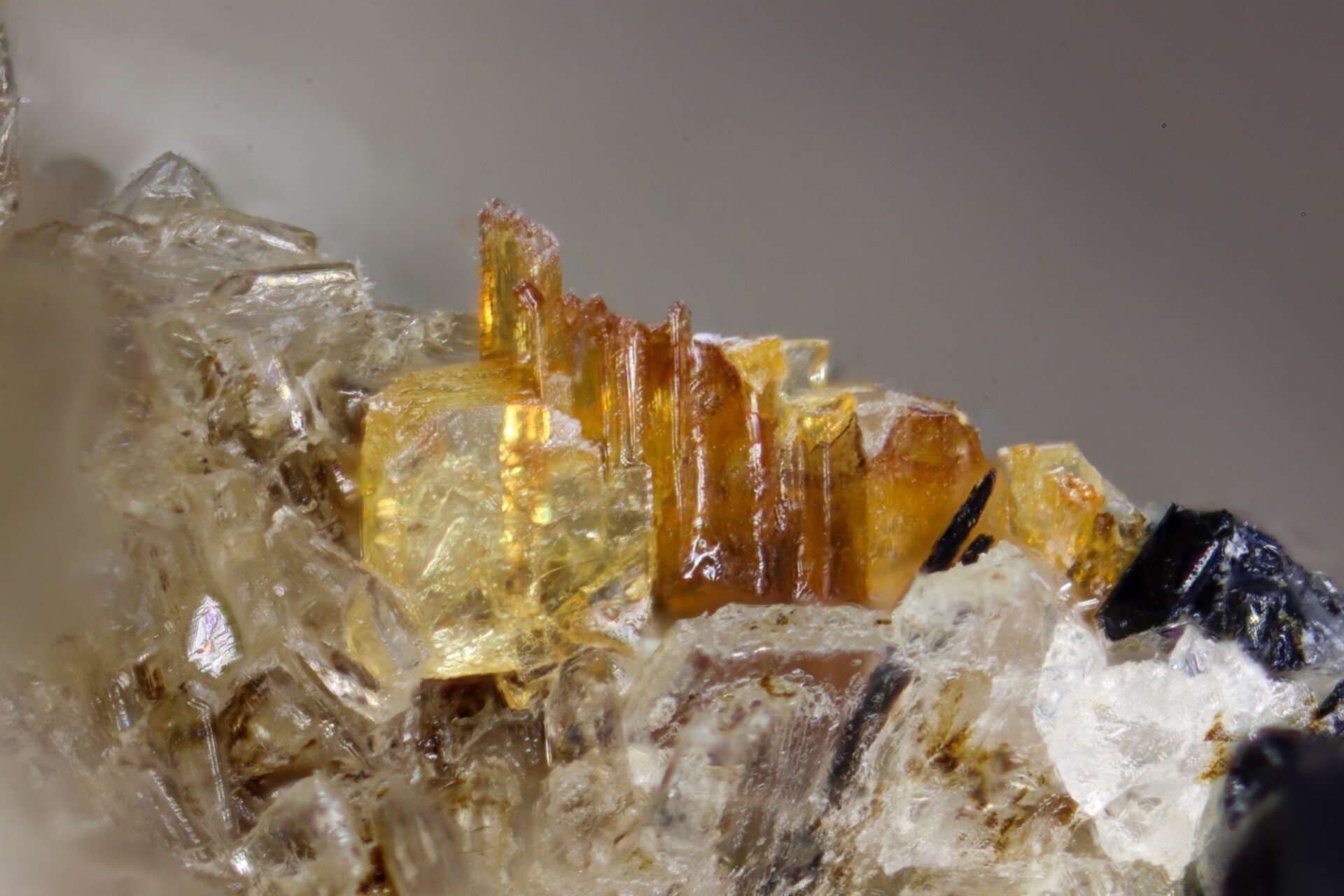
Wöhlerite might not be a household name, but this fascinating mineral has a rich history and unique properties that make it worth knowing. Named after the German chemist Friedrich Wöhler, who is famous for synthesizing urea, wöhlerite is a rare silicate mineral found in specific geological environments. Wöhlerite typically forms in alkaline igneous rocks and is often associated with other rare minerals. Its distinctive yellow to brown color and complex crystal structure make it a subject of interest for mineralogists and collectors alike. Whether you're a geology enthusiast or just curious about the natural world, learning about wöhlerite offers a glimpse into the intricate and beautiful complexities of Earth's mineral kingdom.
Key Takeaways:
- Wöhlerite, named after chemist Friedrich Wöhler, is a rare mineral found in Norway. Its unique properties and geological significance make it a prized specimen for collectors and a subject of study for scientists.
- With its prismatic crystals, Mohs hardness of 5 to 6, and ability to fluoresce under UV light, Wöhlerite is a fascinating mineral that offers insights into geological processes and the Earth's mantle.
What is Wöhlerite?
Wöhlerite is a fascinating mineral with a rich history and unique properties. Named after the German chemist Friedrich Wöhler, this mineral has intrigued scientists and collectors alike. Let's dive into some intriguing facts about Wöhlerite.
Origins and Discovery
Understanding the origins and discovery of Wöhlerite provides insight into its significance in the world of minerals.
- Wöhlerite was first discovered in Norway in 1829 by Friedrich Wöhler, a pioneering chemist known for synthesizing urea.
- The mineral is named after Friedrich Wöhler to honor his contributions to chemistry and mineralogy.
- Wöhlerite is primarily found in nepheline syenite pegmatites, which are rare igneous rocks rich in alkali metals.
- Norway remains the primary source of Wöhlerite, particularly in the Langesundsfjord region, known for its diverse mineral deposits.
Physical Properties
Wöhlerite's physical properties make it a unique and identifiable mineral.
- Wöhlerite typically forms prismatic crystals that can range from yellow to brown in color.
- The mineral has a Mohs hardness of 5 to 6, making it relatively hard but still softer than quartz.
- Wöhlerite has a vitreous to resinous luster, giving it a shiny, glass-like appearance.
- It exhibits perfect cleavage in one direction, meaning it can split easily along a specific plane.
- The specific gravity of Wöhlerite ranges from 3.4 to 3.5, indicating it is denser than many common minerals.
Chemical Composition
The chemical makeup of Wöhlerite is complex and fascinating, contributing to its unique properties.
- Wöhlerite is a silicate mineral that contains zirconium, sodium, calcium, and other elements.
- Its chemical formula is NaCa2(Zr,Ti)Si2O7(O,OH,F), reflecting its diverse elemental composition.
- The presence of zirconium gives Wöhlerite its distinctive properties, including its color and density.
- Wöhlerite can contain trace amounts of rare earth elements, adding to its scientific interest.
Uses and Applications
While not widely used in industry, Wöhlerite has some interesting applications and uses.
- Wöhlerite is primarily a collector's mineral, prized for its rarity and unique appearance.
- It is studied by mineralogists and geologists to understand the formation and composition of nepheline syenite pegmatites.
- Wöhlerite can be used as a source of zirconium, although it is not a primary ore for this element.
- The mineral's unique properties make it a subject of research in materials science and chemistry.
Geological Significance
Wöhlerite plays a role in understanding geological processes and formations.
- Wöhlerite's presence indicates specific geological conditions, such as high alkalinity and the presence of rare elements.
- Studying Wöhlerite helps geologists understand the formation of nepheline syenite pegmatites, which are rare and geologically significant.
- The mineral's composition provides clues about the Earth's mantle, as it forms in environments rich in alkali metals and rare elements.
Collecting and Identification
For mineral collectors, Wöhlerite is a prized specimen due to its rarity and unique properties.
- Wöhlerite specimens are often found in mineral shows and collections, particularly those specializing in rare minerals.
- Identifying Wöhlerite requires knowledge of its physical and chemical properties, including its color, luster, and crystal form.
- Collectors value Wöhlerite for its aesthetic appeal, with well-formed crystals being particularly sought after.
- The mineral's rarity makes it a valuable addition to any collection, often fetching high prices among enthusiasts.
Interesting Tidbits
A few more fascinating facts about Wöhlerite to round out our exploration.
- Wöhlerite can fluoresce under UV light, displaying a yellow to greenish glow, adding to its allure for collectors and researchers alike.
The Fascinating World of Wöhlerite
Wöhlerite isn't just another mineral; it's a window into Earth's geological history. Found primarily in Norway, this rare gem boasts a unique crystal structure and vibrant colors, making it a favorite among collectors and geologists alike. Its composition includes elements like zirconium, niobium, and titanium, which contribute to its distinct properties.
Understanding wöhlerite helps scientists learn more about the processes that shape our planet. Its formation in alkaline igneous rocks provides clues about the conditions deep within the Earth. Plus, its rarity and beauty make it a sought-after specimen for museums and private collections.
Whether you're a geology enthusiast or just curious about the natural world, wöhlerite offers a glimpse into the complexity and wonder of Earth's minerals. Keep an eye out for this intriguing mineral next time you explore the world of geology.
Frequently Asked Questions
Was this page helpful?
Our commitment to delivering trustworthy and engaging content is at the heart of what we do. Each fact on our site is contributed by real users like you, bringing a wealth of diverse insights and information. To ensure the highest standards of accuracy and reliability, our dedicated editors meticulously review each submission. This process guarantees that the facts we share are not only fascinating but also credible. Trust in our commitment to quality and authenticity as you explore and learn with us.
